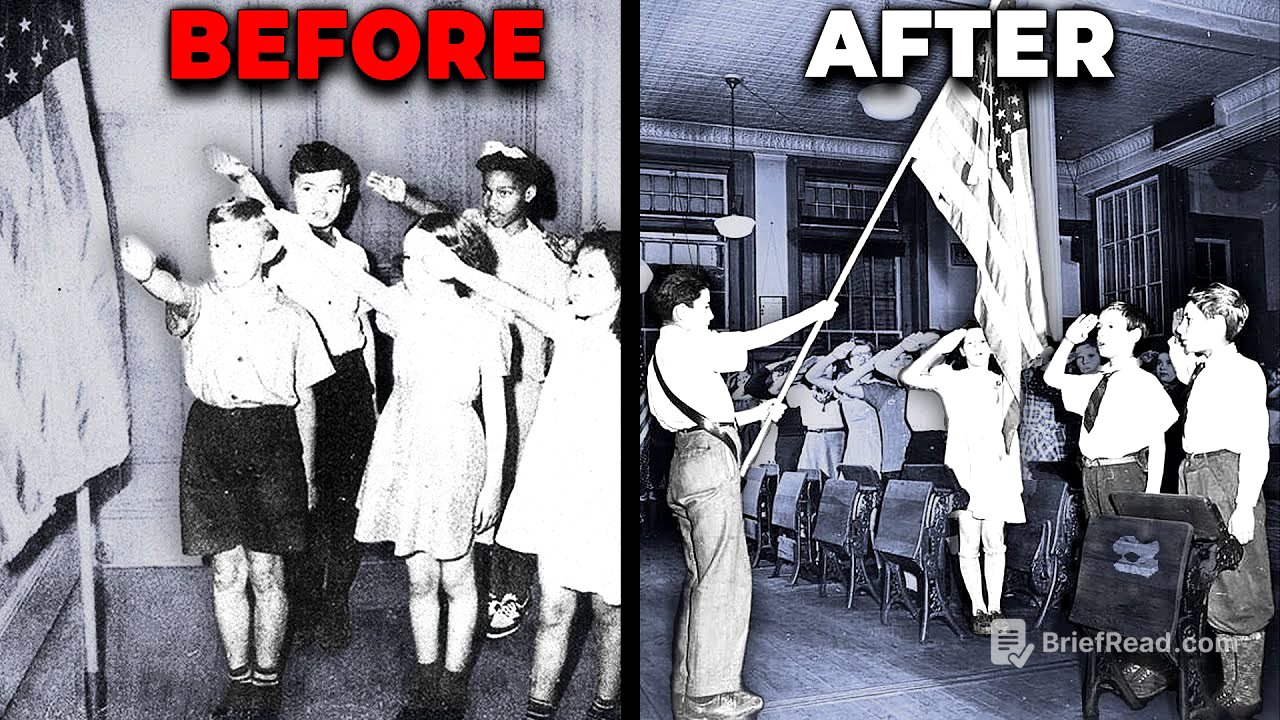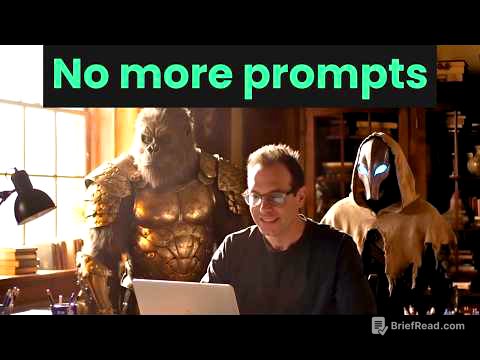TLDR;
This video discusses the misconceptions of racial supremacy and how propaganda and fear-mongering perpetuate it. It explores the historical context of nationalism in the late 1800s and early 1900s, the emergence of white supremacy groups, and the influence of figures like Edward Bellamy. The video also examines the nature of American government, contrasting it with pure democracy and highlighting the role of the Constitution. It further investigates the origins of the Pledge of Allegiance, its connection to patriotic education, and the involvement of nationalist groups like the Ku Klux Klan in promoting a specific vision of American identity.
- Supremacy is an illusion that is perpetuated by propaganda and fear-mongering.
- Nationalist groups in the late 1800s and early 1900s, including white supremacist organizations, sought to establish dominance over other races.
- The Pledge of Allegiance was created to instill patriotism in children and promote conformity to a specific vision of American identity.
Introduction: The Illusion of Supremacy [0:02]
The video introduces the topic of misconceptions surrounding racial supremacy, asserting that it is an illusion fueled by influential propaganda and fear-mongering. The public often overlooks tactical social engineering experiments, diverting blame onto other subjects or conspirators. This ignorance prevents understanding the true motives behind past and potential future events, as enemies invest in the public's mental demise. The video emphasizes the importance of recognizing unpopular truths to combat a world filled with lies and to gain control over oneself, as fear is a powerful motivator used by marketers and others to influence behavior.
Nationalism and White Supremacy in the Late 1800s [2:07]
The video discusses the rise of nationalist clubs in the late 1800s and early 1900s, influenced by Edward Bellamy's utopian novel "Looking Backward." These nationalist movements aimed to educate the public along nationalist lines, fostering devotion to one's country and a desire for national unity and prosperity. During this era, white supremacy emerged as nationalist groups like the Ku Klux Klan infiltrated social, political, and governmental organizations with reconstructive plans to ensure the survival of the white race. These groups sought supremacy over other races, masking their agenda behind claims of equality and democracy.
The Nature of American Government [5:46]
The video explains that the United States is a constitutional federal republic, not a pure democracy. The Constitution serves as the supreme law, structuring and limiting governmental powers. While the Constitution appears clearly defined, it contains wording that only seems to provide jurisdiction and equal protection, omitting who benefits from agreements. It replaced any pre-existing forms of government. Before the current system, people had a general sense of their nature and character, acting according to their desires without external control.
Democracy vs. Republic [8:18]
The video contrasts pure democracy, where laws are made directly by the voting majority, with a republic, where laws are made by elected representatives and must comply with a constitution protecting minority rights. The education system focuses on external government, overshadowing individual reasoning for self-governance. The phrase "We the people" in the Constitution refers to the society or organization that incorporated itself as the government of the United States, previously known as the Union. The video urges listeners to remember that "we the people" are the government, not a distant, uncontrollable force.
The Illusion of Inclusion [10:50]
The video questions whether the laws created truly serve the best interests of the people and, if so, which people. It suggests that the public has been lowered into a state where they have given strangers the power of authority, an illusion that began when ancestors were vulnerable children swayed by seemingly greater, more intelligent strangers. The video breaks down the word "republic" into "re" (a return of something) and "public" (something concerning the people as a whole, but in this context, something existing in open view publicly). A republic is a readjustment or reorganization, similar to a reconstruction.
Reconstruction and the Pledge of Allegiance [14:25]
The video discusses the reconstruction period in America, during which immigrants sought a peaceful, democratic approach to be accepted into society. These newcomers, facing poverty, perceived the established lives of the Niji (a term used in the video) and were critical of their perceived lack of openness. The government created by the 13 colonies was still in place but lacked firm control over the Niji. Intermediate social structures, like voting, were introduced, allowing for the formation of a stranger's traditional hierarchy. Nationalist groups sabotaged elections to hijack political infrastructures, using propaganda to create and spread fear while promoting the voting system.
Patriotic Education and the Pledge of Allegiance [17:21]
The video explores the origins of patriotic education, highlighting Colonel George Balch, a kindergarten teacher who planned ceremonies for children and founded the flag salute and patriotic teaching in public schools. Balch corresponded with educational agents and believed in conditioning children through patriotism, emphasizing their obligations to the country. He created the first pledge of allegiance, recited by poor and immigrant kindergarteners, and advocated for displaying the American flag in schools and awarding flags to well-behaved children.
The Creation and Promotion of the Pledge [21:01]
The video details how President Benjamin Harrison's proclamation to honor Columbus Day was used as a reason for a surge of patriotism toward the flag, a symbol used as a sigil for children. The insertion of the pledge of allegiance was disguised as an honor to Christopher Columbus' voyage, hiding its true motives. Francis Bellamy, a socialist Baptist minister, was commissioned to create the pledge. He composed the pledge in August 1892: "I pledge allegiance to my flag and the republic for which it stands, one nation, indivisible, with liberty and justice for all." The pledge was approved with an accompanying gesture.
Flag Day and the Ku Klux Klan [24:44]
The video discusses President Woodrow Wilson's establishment of June 14th as Flag Day in 1916. In 1923, representatives from the Army, Navy, and national groups, including the Women of the Ku Klux Klan, convened for a national flag conference, adopting the national flag code. The Ku Klux Klan released a pamphlet affirming their devotion to the American flag, debunking rumors of their use of the Confederate flag. The video concludes by stating that history repeats itself due to public ignorance, but this cycle can be broken if a portion of the public becomes aware of the truth and resists foreign influence.









